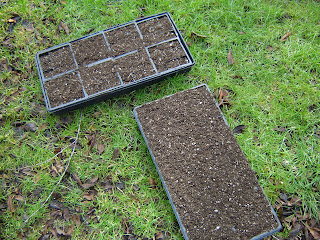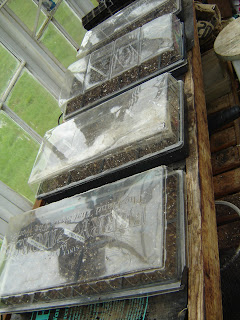- Disease and insect prevention
- Soil fertility management
Crop rotation also helps you optimize your soil's fertility. Different families of plants have different nutrient demands..... for example, some are heavy nitrogen feeders, others need more potassium or trace minerals. If you grow the same crops in the same beds year after year, the soil becomes depleted of that high demand nutrient, which in time will compromise your crop's health, growth and yield. By moving your crops around each year, you'll balance out your soil's nutrient demands, minimizing your need for supplemental fertilizing and composting/manures, and fostering healthy maximum harvests.
In general, you should wait at least 3 years before planting the same family of crops in the same bed, but an easier way to remember the rule is with the little poem "LEAF to ROOT to FLOWER to FRUIT".
LEAF
Most leaf crops are heavy nitrogen feeders, so a well manured/fertilized bed is essential.
ROOT
After your leafy crops are harvested you should rotate the bed and introduce root vegetables which require less nitrogen, but more potassium and trace minerals. See how we're starting to balance our the nutrient consumption? Composting again would be a good idea, but no additional fertilizing is needed.
FLOWER
With the first two rotations we consumed a lot of nitrogen, potassium and trace minerals. Now we're going to put some of that back with the flower rotation. Flowers refers to cut flowers or cover crops (as shown by the buckwheat in the photo below). Flowers not only attract beneficial insects but most often can be dug in/turned under, replenishing the soil with important nutrients, and thus preparing it for the next rotation, fruits.
FRUIT
Fruits is the final rotation. Tomatoes, peppers and corn all grow well in a bed prepared from a dug in cover crop. Small grains and pulses are less nutrient demanding and give pleasing yields.
Once your fruit rotation is harvested, give your beds a good dose of manure and organic fertilizer before returning to the LEAF rotation and starting the process all over again.
Much of the information shared in this post was sourced from "The Maritime Northwest Garden Guide", produced by Seattle Tilth.













